Nautobot Application: BGP Models
We are happy to announce the release of a new application for Nautobot. With this application, it’s now possible to model your ASNs and BGP Peerings (internal and external) within Nautobot!
This is the first application of the Network Data Models family which gave us a great opportunity to test some new capabilities of the application framework introduced by Nautobot. Data modeling is an interesting exercise, and with BGP being a complex ecosystem, this has been an interesting project. This blog will present the application and some design principles that we had in mind when it was developed.
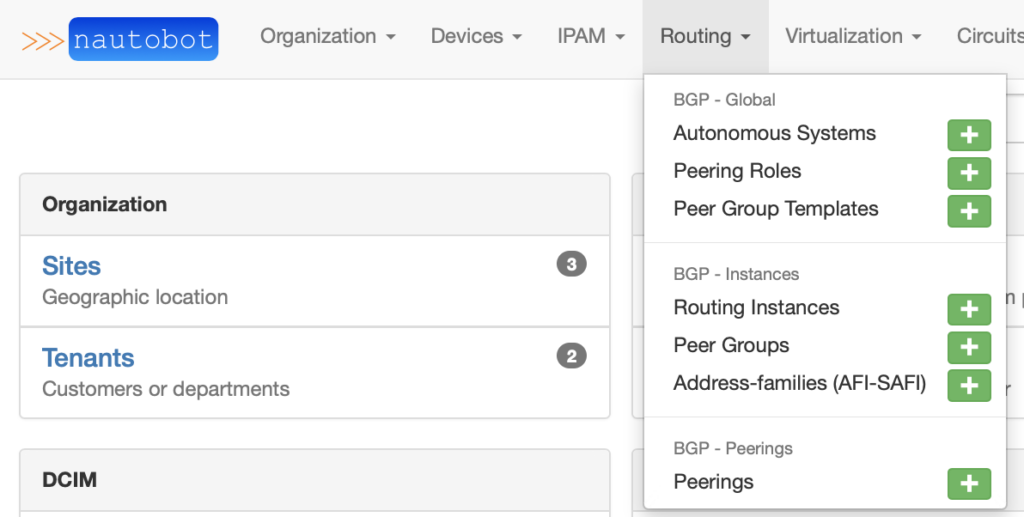
The development of this application was initially sponsored by the Riot Direct team at Riot Games. Thanks to them for contributing it back to the community.
Overview
This application adds the following new data models into Nautobot:
- BGP Routing Instance : device-specific BGP process
- Autonomous System : network-wide description of a BGP autonomous system (AS)
- Peer Group Template : network-wide template for
Peer Groupobjects - Peer Group : device-specific configuration for a group of functionally related BGP peers
- Address Family : device-specific configuration of a BGP address family (AFI-SAFI)
- Peering and Peer Endpoints : A BGP Peering is represented by a Peering object and two endpoints, each representing the configuration of one side of the BGP peering. A Peer Endpoint must be associated with a BGP Routing Instance.
- Peering Role : describes the valid options for
PeerGroup,PeerGroupTemplate, and/orPeeringroles
With these new models, it’s now possible to populate the Source of Truth (SoT) with any BGP peerings, internal or external, regardless of whether both endpoints are fully defined in the Source of Truth.
The minimum requirement to define a BGP peering is two IP addresses and one or two autonomous systems (one ASN for iBGP, two ASNs for eBGP).
Peering
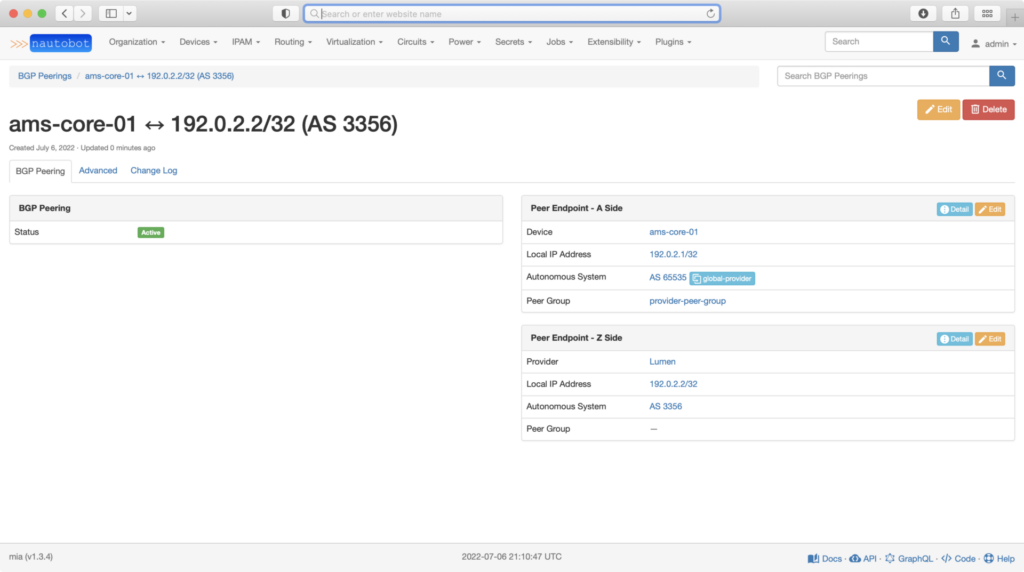
Autonomous Systems
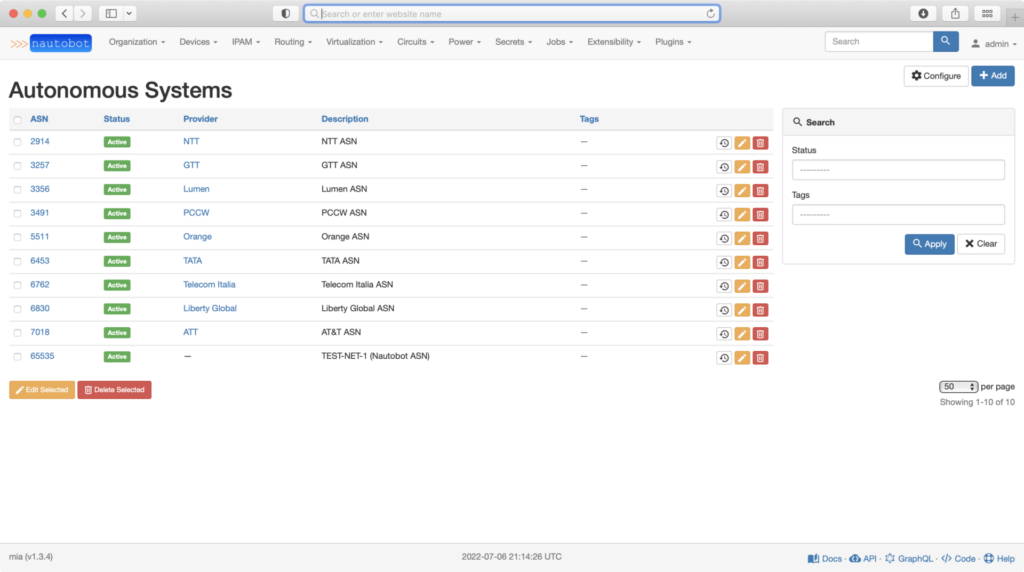
Peer Endpoint
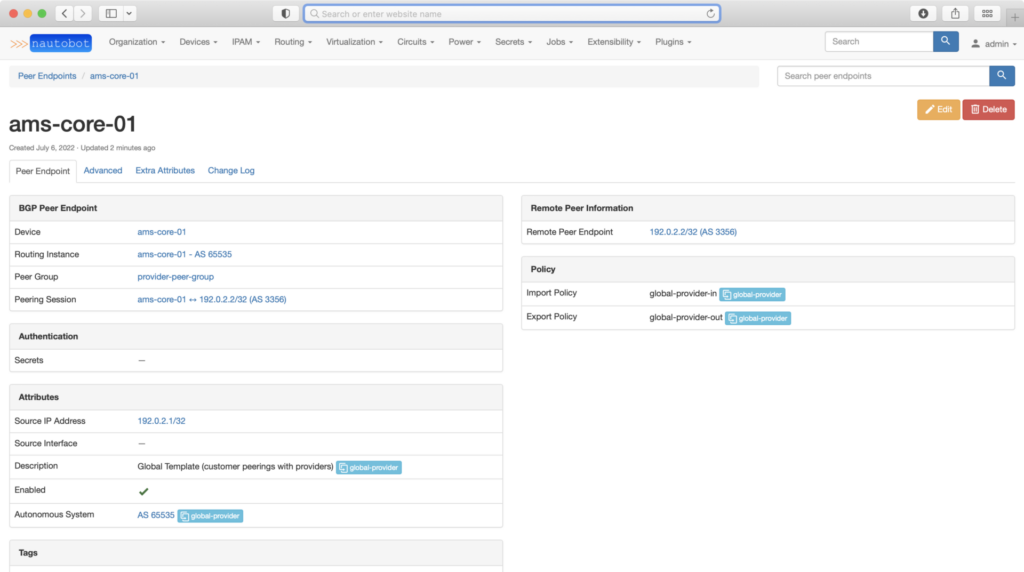
Peer Group
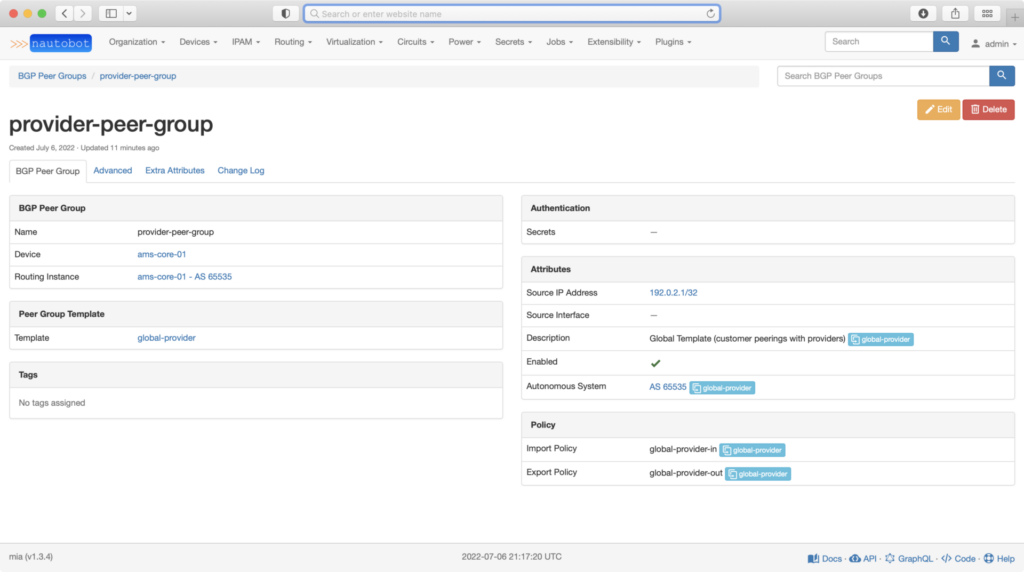
Peering Roles
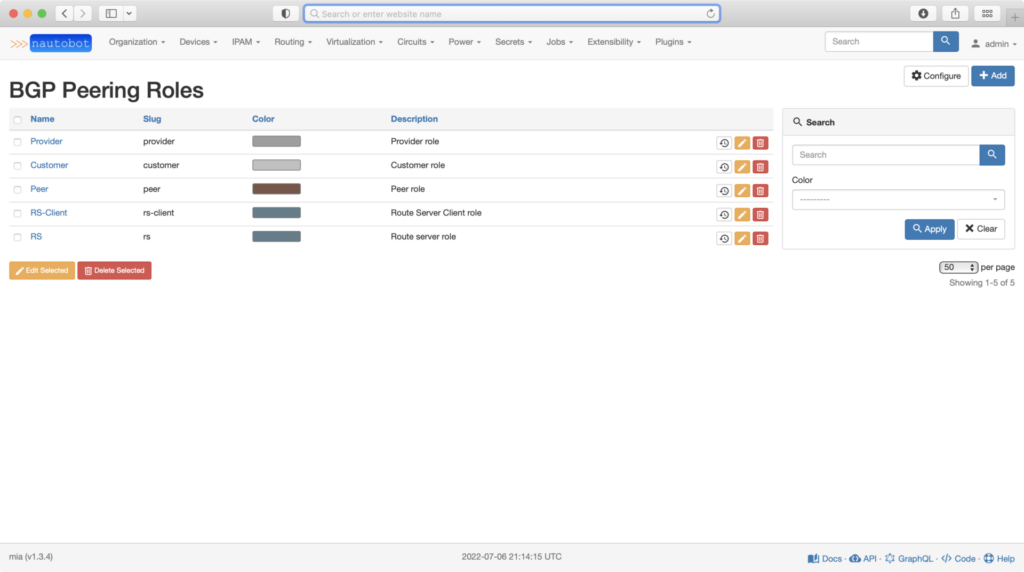
Installing the Application
The application is available as a Python package in PyPI and can be installed atop an existing Nautobot installation using pip:
$ pip3 install nautobot-bgp-models
This application is compatible with Nautobot 1.3.0 and higher.
Once installed, the application needs to be enabled in the nautobot_config.py file:
# nautobot_config.py
PLUGINS = [
# ...,
"nautobot_bgp_models",
]
Design Principles
BGP is a protocol with a long and rich history of implementations. As we understand existing limitations of data modeling relevant to this protocol, we had to find right solutions both for innovations and improvements. In this section we explain our approach to the BGP data models.
Network View and Relationship First
One of the advantages of a Source of Truth is that it captures how all objects are related to each other and then exposes those relationships via the UI and API, making it easy for users to consume that information.
Instead of modeling a BGP session from a device point of view with a local IP address and a remote IP address, the decision to model a BGP peering as a relationship between two endpoints was chosen. This way, each endpoint has a complete understanding of what is connected on the other side, and information won’t be duplicated when a session between two devices exists in the SoT.
This design also accounts for external peering sessions where the remote device is not present in Nautobot, as is often the case when you are peering with a transit provider.
Start Simple
For the first version we decided to focus on the main building blocks that compose a BGP peering. Over time the BGP application will evolve to support more information: routing policy, community, etc. Before increasing the complexity we’d love to see how our customers and the community leverage the application.
Inheritance
Many of the Border Gateway Protocol implementations are based on the concept of inheritance. It’s possible to centralize almost all information into a Peer Group Template model, and all BGP endpoints associated with this Peer Group Template will inherit all its attributes.
The concept is very applicable to automation, and we wanted to have a similar concept in the SoT. As such, we implemented an inheritance system between some models:
- A
PeerGroupinherits fromPeerGroupTemplate. - A
PeerEndpointinherits fromPeerGroup,PeerGroupTemplate,BGPRoutingInstance.
As an example, a PeerEndpoint associated with a PeerGroup will automatically inherit attributes of the PeerGroup that haven’t been defined at the PeerEndpoint level. If an attribute is defined on both, the value defined on the PeerEndpoint will be used.
(*) Refer to the application documentation for all details about the implemented inheritance pattern.
The inherited values will be automatically displayed in the UI and can be retrieved from the REST API with the additional ?include_inherited=true parameter.
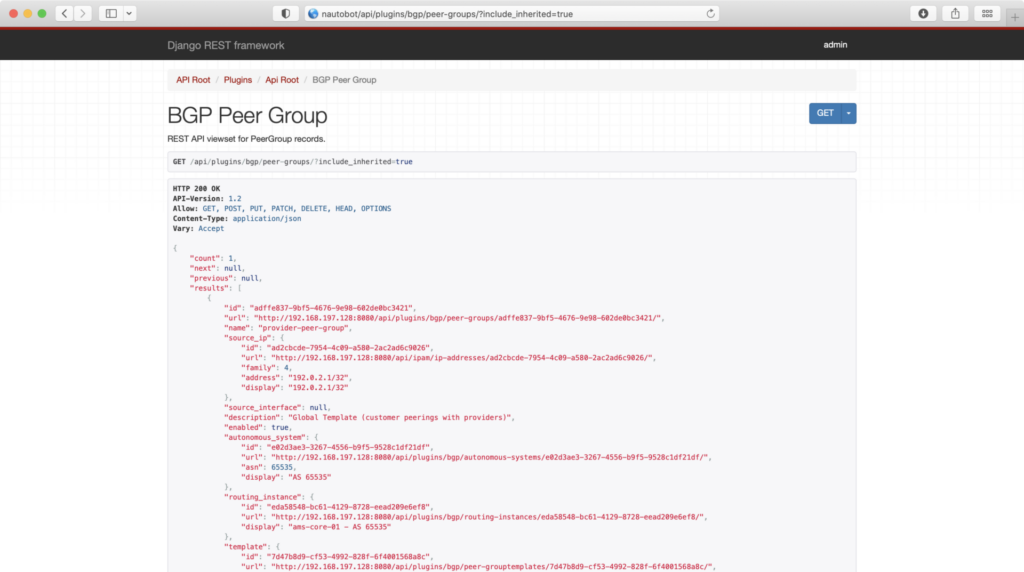
Extra Attributes
Extra attributes allow to describe models provided by the application with additional information. We made a design decision to allow application users to abstract their configuration parameters and store contextual information in this special field. What makes it very special is the support for inheritance. Extra attributes are not only inherited, but also intelligently deep-merged, thus allowing for inheriting and overriding attributes from related objects.
Integration with the Core Data Model
With Nautobot, one of our goals is to make it easy to extend the data model of the Source of Truth, not only by making it easy to introduce new models but also by allowing applications to extend the core data model. In multiple places, the BGP application is leveraging existing Core Data models.
Extensibility
We designed the BGP models to provide a sane baseline that will fit most of the use cases, and we encourage everyone to leverage all the extensibility features provided by Nautobot to store and organize the additional information that you need under each model or capture any relationship that is important for your organization.
All models introduced by this application support the same extensibility features supported by Nautobot, which include:
- Custom fields
- Custom links
- Relationships
- Change logging
- Custom data validation logic
- Webhooks in addition to the REST API and GraphQL.
An example can be seen in the Nautobot Sandbox where a relationship between a circuit and a BGP session was added to track the association between a BGP session and a given circuit.
Conclusion
More information on this application can be found at Nautobot BGP Plugin. You can also get a hands-on feel by visiting the public Nautobot Sandbox.
As usual, we would like to hear your feedback. Feel free to reach out to us on Network to Code’s Slack Channel!
-Damien & Marek
Contact Us to Learn More
Share details about yourself & someone from our team will reach out to you ASAP!
